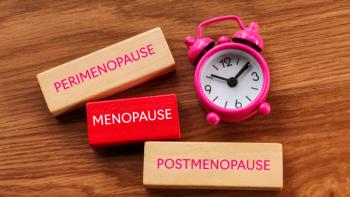
- March 2014 Mental Health
- Volume 80
- Issue 3
GPhA Study Finds Economic Consequences in Proposed FDA Rule
A proposed rule changing drug labeling permissions would add $4 billion to the nation's annual health care costs, finds a study sponsored by the Generic Pharmaceutical Association.
A proposed rule changing drug labeling permissions would add $4 billion to the nation’s annual health care costs, including $1.5 billion to government health programs and $2.5 billion to private health insurance, a Generic Pharmaceutical Association (GPhA)—sponsored study alleges.
The study, conducted by economic consulting firm Matrix Global Advisors and released February 5, 2014, examines the costs associated with the proposed rule, and the impact on public and private generic drug spending.
“This policy change would create a drastically altered landscape for generic drug manufacturers—one that would have significant consequences for both private and public US health spending by increasing the prices of generic drugs,” the analysis states.
The rule change has the potential to expose generic manufacturers to the types of product liability lawsuits that brand name drug manufacturers face. Manufacturers would likely need to raise generic drug prices to offset litigation costs and insurance premium increases, which would then increase costs to public and private insurers.
“The FDA reaches this conclusion because it estimates the annual net social cost of the Proposed Rule based only on the paperwork and administrative burdens on ANDA [abbreviated drug application] and NDA [new drug application] holders,” the report states. “The agency does not estimate any impact from generic product liability and the accompanying price increases on physicians, pharmacists, hospitals, insurers, patients, or public payors such as Medicare or Medicaid.”
Generic manufacturers’ insurance costs are also expected to rise as a result of liability lawsuits, the analysis contends. Product liability options for generic manufacturers include self-insuring and purchasing high-deductible insurance plans, which would likely increase more if the manufacturers are open to failure-to-warn lawsuits.
The increased risks may lead generic manufacturers to opt against creating generic versions of brand name medications that they perceive to be “high liability,” which would decrease competition with the brand name drug, the report states. In certain cases, generic manufacturers may decide to leave the market entirely.
Generic manufacturers would also need to undertake costs associated with duplicating brand name manufacturers’ safety monitoring.
The proposed rule, “Supplemental Applications Proposing Labeling Changes for Approved Drugs and Biological Products,” would allow generic manufacturers to change product labels after the products are already on the market, regardless of any changes to the reference product. Generic manufacturers are currently allowed to change the generic labels only if the brand name manufacturer changes the reference product label.
The proposed change follows several high-profile court cases in which patients receiving generic versions of brand name medications with after-market safety indications could not receive compensation for injuries sustained while on the generic version of the drug, despite it being the same product. The FDA introduced the proposed rule in late 2013, shortly after the US Supreme Court ruling determined that state laws pertaining to drug warning labels do not preempt federal labeling policies.
“If the Proposed Rule takes effect for generic manufacturers, it will have the (expressly intended) consequence of exponentially increasing litigation risk, burdening generic companies with additional regulatory obligations, and increasing the costs of drugs that have already been vetted by FDA through the rigorous NDA process, and safely marketed for years during the period of exclusivity for the NDA holder,” GPhA said in a white paper about the rule.
In addition, certain requirements in the Proposed Rule, such as issuing “Dear Health Care Provider” letters immediately after submitting a change-being-effected supplement (the process for generic manufacturers to change their product labels), are not permitted by existing FDA statutes, the white paper notes. The Supreme Court decisions that prompted the proposed rule noted this, the paper adds.
According to the report, the FDA estimates that the rule change will result in $128 to $6683 in annual net social cost for ANDA holders. The issue with the estimation is that it encompasses only the administrative and paperwork costs to ANDA and NDA holders.
The FDA acknowledged excluding additional potential costs from its preliminary impact analysis, citing the uncertainty about how the rule change would alter the industry’s operations.
If it is approved, the rule itself would not provide the impetus needed to change generic drug labels, because most generic manufacturers aim to avoid confusion—and multiple drug labels that are different from the reference product and other generic manufacturers’ products would only confuse patients and providers, GPhA states.
Ralph G. Neas, GPhA president and CEO, called the effects of the proposed rule “catastrophic” for the generic drug industry, as well as for patients, providers, businesses, and insurance plans.
“New labeling regulations should protect patients, facilitate care, and reduce costs,” Neas said. “Unfortunately, the Proposed Rule does none of these things—the unintended consequences of this rule would be nothing short of catastrophic. The FDA and others need to take a hard look at the potential harmful impact on patient access and national health care costs of a Proposed Rule that changes 30 years of law requiring generic and brand medicines to have the same labels, and permits for the first time labeling changes … without FDA approval.”
Articles in this issue
over 11 years ago
Migraines Not More Prevalent in RLS Patientsover 11 years ago
RLS Symptoms Worse in the Summerover 11 years ago
Late-Night Snacking Common Among RLS Patientsover 11 years ago
Higher Vitamin D Level May Improve Parkinson's Disease Symptomsover 11 years ago
Pesticides Linked to Increased Parkinson's Disease Riskover 11 years ago
Deep Brain Stimulation Helps Parkinson's Disease Patients Driveover 11 years ago
Obesity May Affect Hearingover 11 years ago
Healthy Diets Don't Cost Much More Than Unhealthy Onesover 11 years ago
Pet Peevesover 11 years ago
Case StudiesNewsletter
Stay informed on drug updates, treatment guidelines, and pharmacy practice trends—subscribe to Pharmacy Times for weekly clinical insights.















































































































































































































